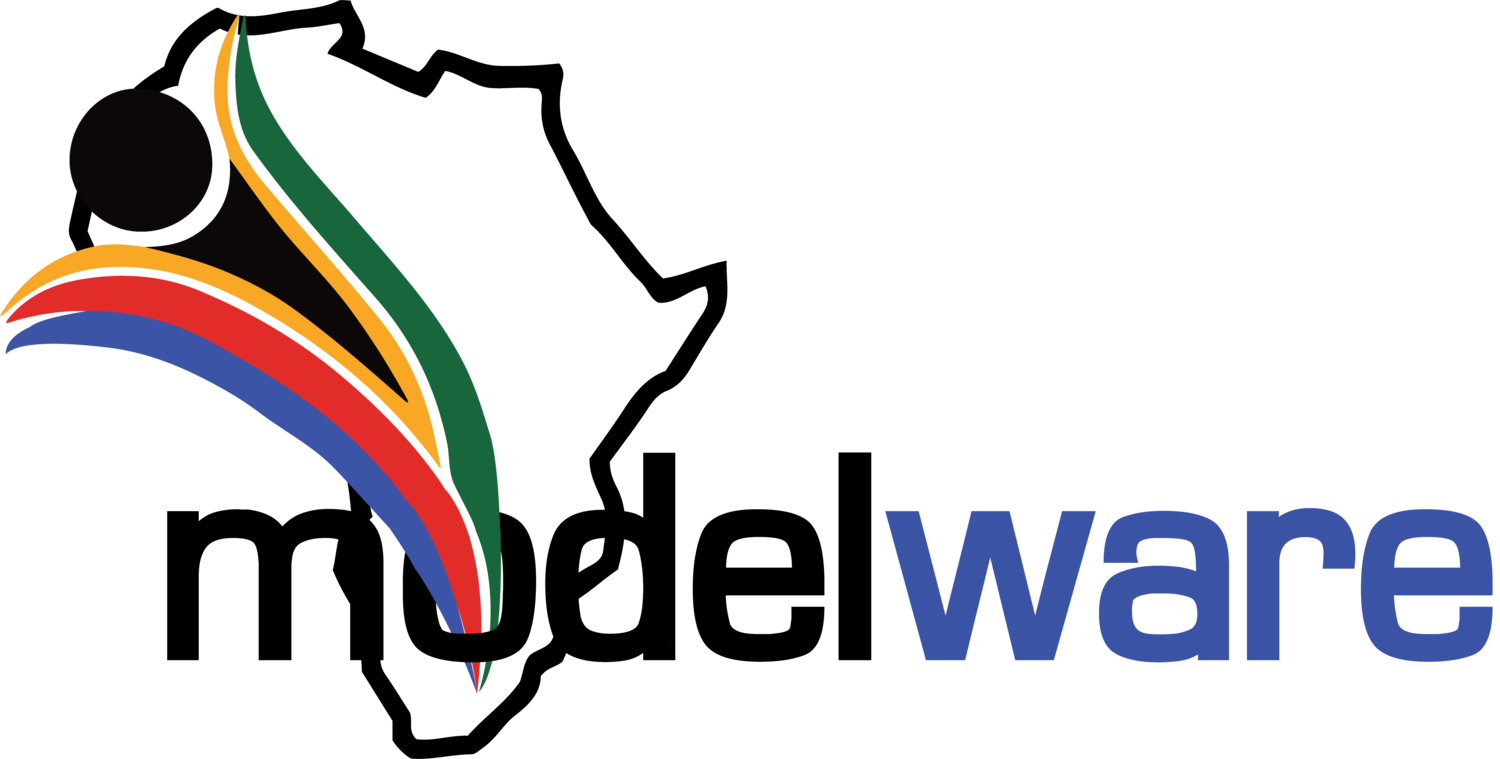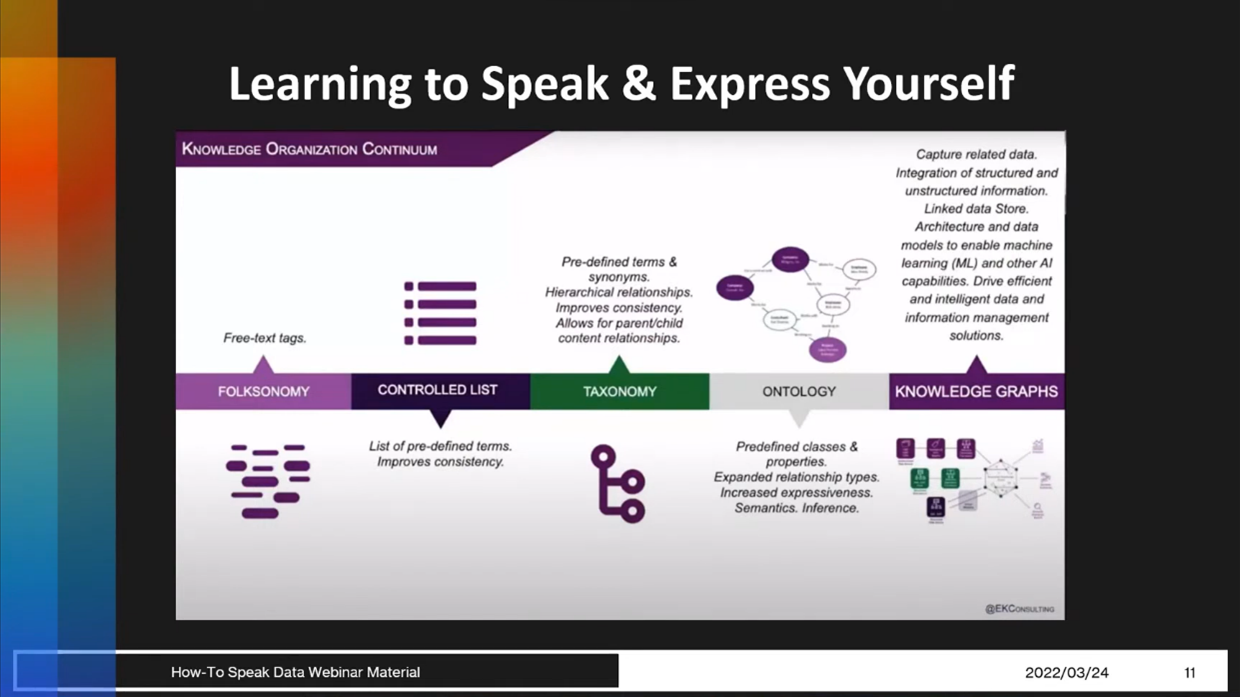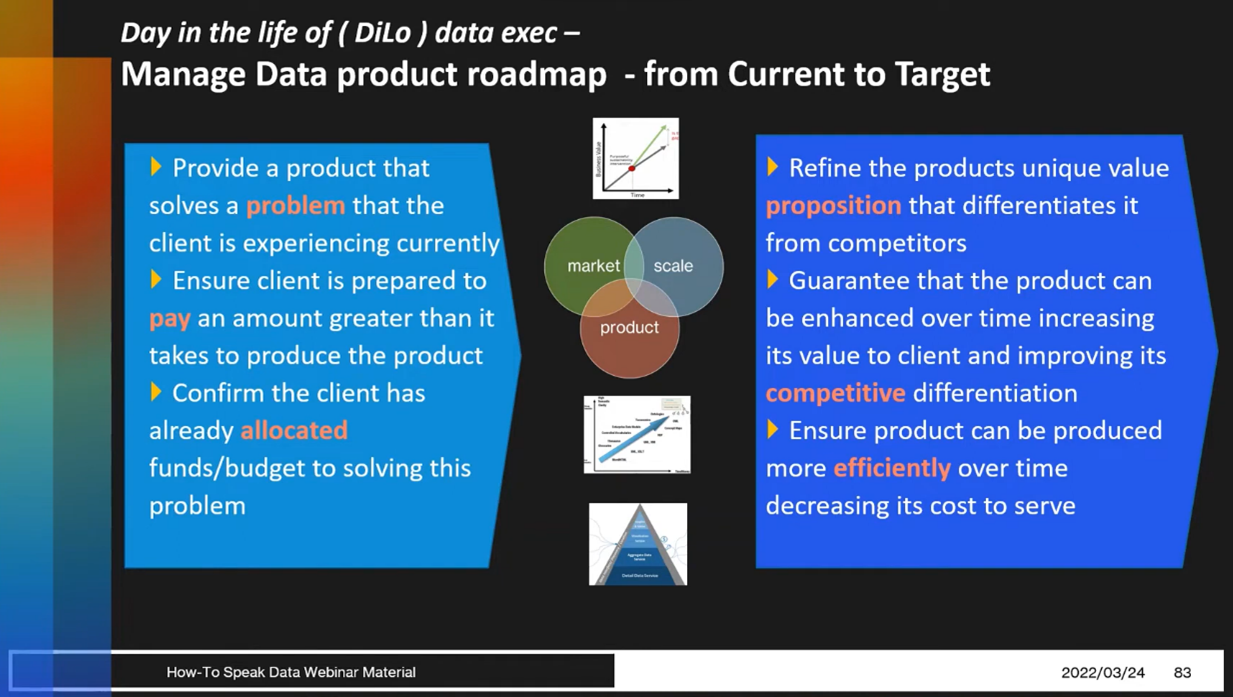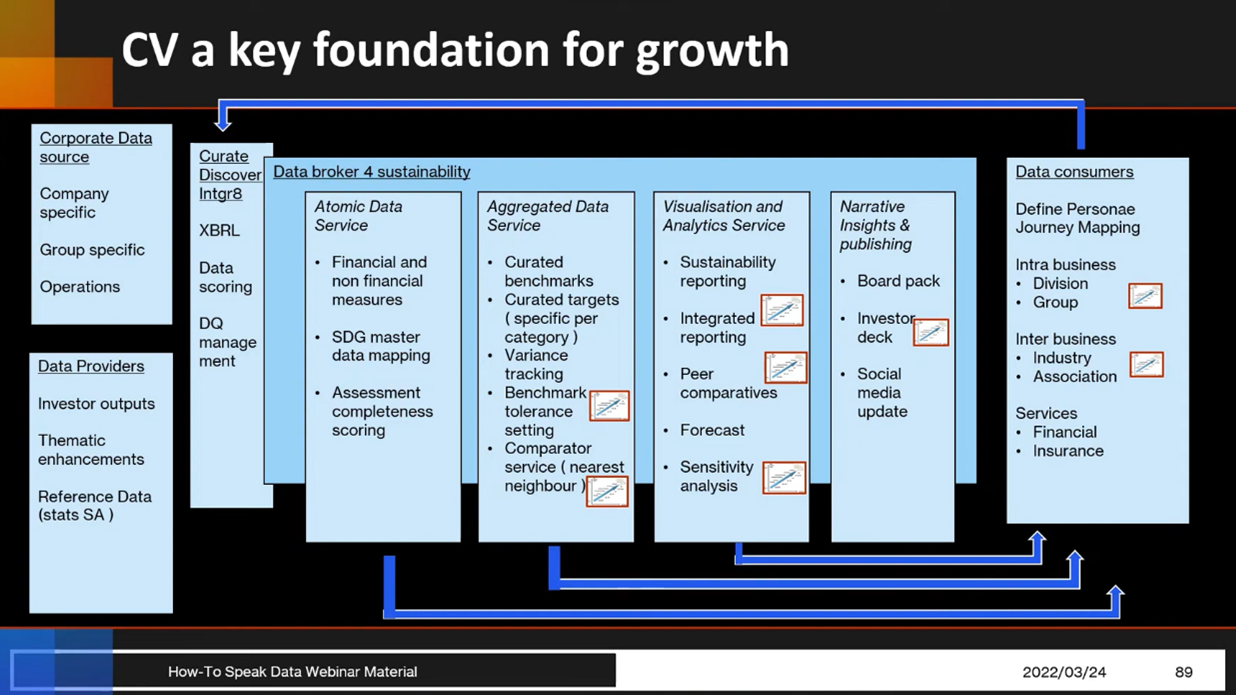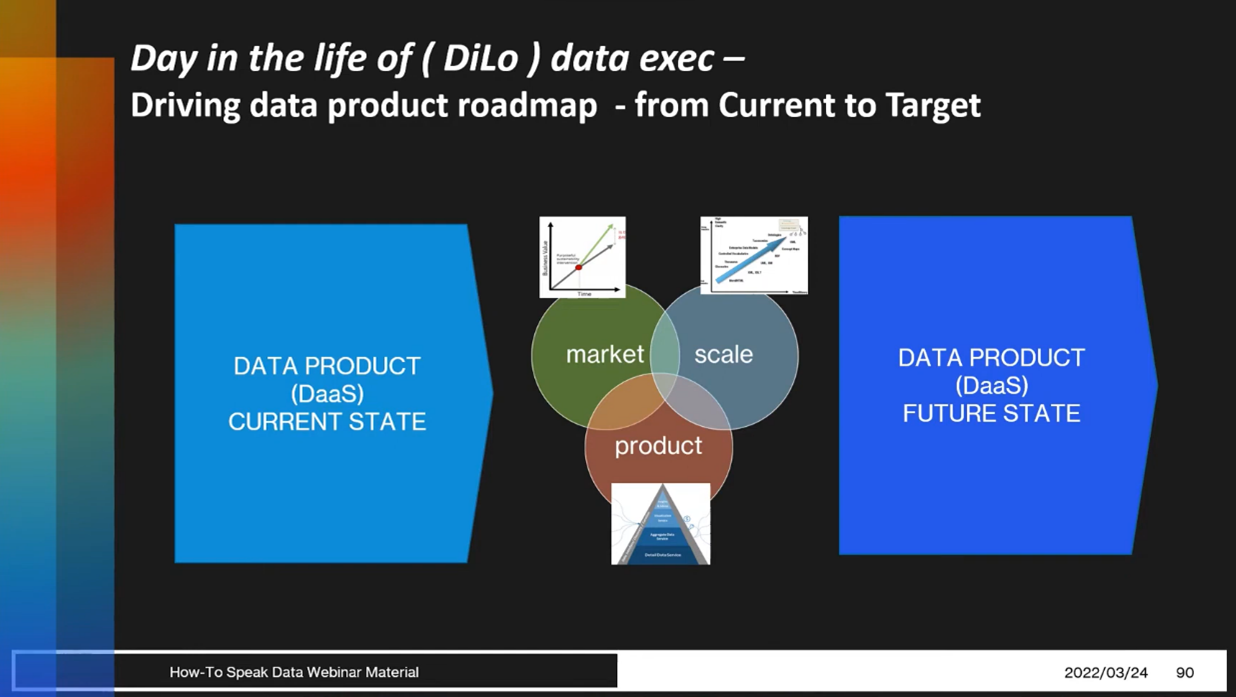How to Productise Data for Data Managers
Executive Summary
Using ontologies, controlled vocabularies, and semantic chains is crucial in knowledge graphs. It is imperative to maintain transparency in sustainability initiatives. Data products significantly impact markets, and transitioning a product to a preferred future state requires understanding the journey and selling the solution to the board. Consistency and precise definitions are essential to achieving sustainability goals. Linking sustainability initiatives to financial documents is also important. Additionally, it's important to discuss sustainability and accounting and the role of data in the sustainability industry. There are various products and services for sustainability reporting, and it's important to have consistent controlled vocabularies and ontologies in business. Observations on finance and sustainability discussion can lead to benefits, involvement, and a successful sales strategy in financial services. JG's role as a data broker adds value. Role and framework are essential in data modelling, and various methodologies should be considered for efficiency and clarity in sustainability reporting.
Webinar Details
Title: HOW TO PRODUCTISE DATA FOR DATA MANAGERS
Date: 27 April 2022
Presenter: JG Cowper
Meetup Group: Data Managers
Write-up Author: Howard Diesel
Contents
Executive Summary
Webinar Details
The Importance of Ontologies, Controlled Vocabularies, and Semantic Chains in Knowledge Graphs
The Importance of Transparency in Sustainability Initiatives
The Importance of Data Products and Their Impact on Markets
Transitioning a Product to a Preferred Future State
Understanding the Journey and Selling the Solution to the Board
Budgeting Cycle and Market Problem for a Sustainable Solution
Consistency and predictive definition play a crucial role in achieving this goal
Importance of Linking Sustainability Initiatives to Financial Documents
Coupling Sustainability Initiatives with Financial Documents
Questions and Discussions on Sustainability and Accounting
The Role of Data in the Sustainability Industry
Types of Products and Services for Sustainability Report
Extended sustainability offering and divisional competition for sustainability scores
Importance of Controlled Vocabularies and Ontologies in Business
Observations on Finance and Sustainability Discussion
Discussion on Benefits, Involvement, and Sales Strategy in Financial Services
JG's role as a data broker and value addition
The Importance of Role and Framework in Data Modeling
Consideration of Various Methodologies for Efficiency and Clarity in Sustainability Reporting
The Importance of Ontologies, Controlled Vocabularies, and Semantic Chains in Knowledge Graphs
Different elements can be associated by creating an ontology, and a knowledge graph can be built. This makes it possible to connect tags and data elements. Nodes in the knowledge graph can be connected through equivalence relationships, allowing the integration of multiple sources of information. To maintain consistency and ensure proper understanding, controlled vocabularies are essential. They may need to be converted or pivoted to match specific semantic taxonomies when necessary. Semantic chains aim to develop stronger semantics and improve understanding. This involves utilising enterprise data models, taxonomies, and ontologies. Although developing an ontology can require significant time and effort, it can be used to create an enterprise data model. JG will be discussing the business value of semantic chains.
Figure 1 Learning to Speak and Express Yourself (Ontologies)
Figure 2 Controlled Vocabularies
Figure 3 Semantic Chain - More Meaning
The Importance of Transparency in Sustainability Initiatives
When it comes to sustainability, companies need to be transparent about their capital investments and the actions of their suppliers. Experts in sustainability stress the need for all parties involved to work together to create a sustainable partnership.
Transparency is crucial for businesses, especially when dealing with large amounts of data. One of JG's clients has asked for help managing their sustainability efforts, and JG is acting as a data executive to stress the importance of building trust in sustainability.
Three key factors contribute to business confidence in sustainability: having a market that wants the product, offering something unique, and being able to deliver the product quickly and cost-effectively.
Figure 4 Sustainability Use Case
Figure 5 Business Confidence
The Importance of Data Products and Their Impact on Markets
Products centred on data have a competitive edge as they can easily shift between markets. Unlike physical products, data products can also be integrated with other products, creating a complex system. These products offer clients a data-as-a-service, providing a unique experience. Scaling and deployment are effortless, thanks to cloud-based solutions. However, transitioning from the current state to the desired future state requires careful planning and communication with stakeholders. The industrialisation of data products has led to blue-chip companies achieving greater efficiency and value.
Figure 6 Data Product Secret Sauce
Figure 7 Day in the Life of a Data Exec, Driving data product roadmap
Transitioning a Product to a Preferred Future State
The current product has been deployed to existing users with a close to a million rand investment made by the client. The data executive's job is to determine the basis for further investment in the product, considering the traction it has gained with clients. The market has been assessed, and the product has been taken to market, but challenges such as scalability and a lack of numerous clients have been identified. The meeting with Howard focuses on the inhibitors and scaling of the product, emphasising transitioning it from its current state to a preferred future state. To achieve this, three circles will be explored in detail: the market, the product, and the scale. The blue arrow in the top right signifies the semantic chain. The primary focus is on the business case and delivering value to clients, with technical aspects such as graph databases considered secondary. The executive session is usually done last to ensure a better understanding of the technology and how to involve data citizens and professionals.
Figure 8 Data Exec - Manage Data Product Roadmap
Understanding the Journey and Selling the Solution to the Board
During the meeting, Howard emphasised the importance of thoroughly understanding the solution before presenting it to the board. JG then proceeded to explain the current and future state of the product, as well as its guiding principles.
However, the challenge lies with the client being unaware of the additional benefits the product offers and having not allocated enough budget for it. The product solves the current problem and provides potential solutions from different perspectives.
JG stressed the need to highlight these benefits to convince the client of the product's capabilities and expand their perception. The company has invested a million rand in the project and expects a reasonable return on investment.
While the immediate return may be difficult to achieve, the board considers the current run rates acceptable. The potential client has already allocated funds for solving the problem, but further persuasion may be necessary.
Budgeting Cycle and Market Problem for a Sustainable Solution
One important consideration is when to budget in relation to the problem at hand. While finding a sustainable solution is important, budgetary limitations can present a challenge.
The objective is to fine-tune the product's unique value proposition to better distinguish it from competitors. Currently, the market is segmented into raters and consultants, and the aim is to define the product's position more clearly. The primary issue is ensuring that the product adds value and stays ahead of the competition over time.
Consistency and predictive definition play a crucial role in achieving this goal.
Developing taxonomies and ontologies is crucial in finding a more practical solution. Improving production efficiency is also imperative. Adopting an international sustainability taxonomy resolves debates and makes it more appealing to clients. Providing practical examples and explaining the product's benefits is vital for clients. Howard is seeking clarification on how definitions and meanings can differ and needs practical examples to understand better.
Importance of Linking Sustainability Initiatives to Financial Documents
This solution proposes connecting economic and sustainability efforts using financial documents in businesses. Three important documents include the balance sheet, income statement, and cash flow statement. These documents provide insight into capital deployment, profit and loss, and cash generated or used. The aim is to connect sustainability initiatives with items on the balance sheet and income statement. For instance, building a school near a manufacturing site would show expenses flowing from the balance sheet into a sustainable project. This aligns with the Sustainable Development Goals (SDGs). The effects of the school on education and the environment can also be considered in terms of sustainability goals.
Coupling Sustainability Initiatives with Financial Documents
Businesses can track their progress towards sustainability development goals by implementing sustainability initiatives. By investing in sustainable initiatives and linking them to their balance sheets, businesses can demonstrate their long-term commitment to sustainability. This approach allows for better tracking and trend analysis by coupling financial documents with sustainability initiatives. By bringing financials to the sustainability table, businesses can ensure that sustainability initiatives are consistently linked and maintained. Measuring the impact of sustainability interventions on business value is crucial for assessing the effectiveness of investments. Market analysis should focus on integrating sustainability with business value. The CEO and C-suite should also highlight the importance of sustainability in meetings, with key roles such as the chief sustainability officer, chief financial officer, chief marketing officer, and chairperson involved.
Figure 9 The WHY behind Sustainability
Questions and Discussions on Sustainability and Accounting
During discussions on sustainability, it was suggested that a new accounting system be implemented to record key inputs for sustainable business practices accurately. The financial director raised an interesting point about whether sustainable assets should have more extended depreciation periods to reflect their longer operating periods. A structured data system is necessary to track the impact of green assets. It is vital to understand better and report the connection between Environmental, Social and Governance (ESG), and economics in annual integrated reports. The significant increase in industry policy interventions for ESG over the past 16 years is worth noting.
Figure 10 Is sustainability good for Business? Depends on Coupling Economics to ESG (Environmental, Social and Governance)
The Role of Data in the Sustainability Industry
The industry is currently experiencing a surge in business involvement, known as the hockey stick effect. This surge has resulted in increased support for ESG shareholder resolutions, which has led to less resistance at the board level. As a result, the Financial Director (FD) is under increasing pressure to find funding for these resolutions.
Sustainability initiatives have become crucial for cost of capital, as global assets under management have grown by 40%. A company with a sustainability plan is eligible for capital allocations and gains a competitive advantage.
JG has realised that their company functions as a data broker for sustainability. However, due to the lack of product diversity, the company faces a challenge with the data product hierarchy diagram. Despite this, the company continues to focus on delivering sustainability reports but aims to offer more opportunities to clients.
The sales strategy now offers clients what they initially want but intends to lead them towards other data products.
Figure 11 Timeline for Value Proposition
Figure 12 DaaS Business Case
Types of Products and Services for Sustainability Report
To efficiently create a sustainability report, the company adopts a pyramid structure. They have identified almost 15 products, some of which are still in the development phase. These products comprise atomic data services, Sustainable Development Goals (SDG) mapping, completeness scoring, and aggregated services. The company combines financial and non-financial data to provide clients with helpful insights. They even offer a fun and gamified data collection product to expedite the process. The company uses comparator services to classify data, which analyses data based on Johannesburg Stock Exchange (JSE) and e-stat SA. Critical engagement tools include sustainability, reporting, visualisation, narratives, insights, and publishing.
Figure 13 Types of Products and Services for Sustainability Report
Extended sustainability offering and divisional competition for sustainability scores
The company is currently forming partnerships to improve its sustainability offerings, which were not previously available. With the extended sustainability package, data executives can track revenue generated and expenses spent on the platform, providing them a sense of security.
The company can achieve better sales and value by having a series of products and understanding the journey mapping of the persona. They are currently collaborating with intra-business, focusing on divisional and group views.
Divisions within the group are competing against each other to improve their sustainability scores without any direct involvement from the company.
Importance of Controlled Vocabularies and Ontologies in Business
Many businesses are eager to use sustainability as a means of generating profit. By using well-defined contracts, companies can organise data in an appealing way to financial and insurance providers. Controlled vocabularies and ontologies provide security and confidence when creating taxonomies. Better taxonomies can help products gain traction in the market more quickly. The current product is being improved to meet its goals. Consistency is critical when it comes to scaling up a taxonomy. The company currently has an ontology that was put together piecemeal and seeks to improve it.
Observations on Finance and Sustainability Discussion
Rob commends JG's work, stating that it has made it easier for laypeople and executives to understand. He then inquires about the topic of the discussion, noting that it appears to be focused on the Finance Director (FD). JG clarifies that the FD is just an example and that the CEO and Chairman also have crucial roles in sustainability discussions. He emphasises the importance of having a clear and consistent sustainability narrative in financial discussions, vital to attracting capital. It is recommended to align the benefits with the beneficiaries to improve the effectiveness of the discussion.
Discussion on Benefits, Involvement, and Sales Strategy in Financial Services
According to Rob, the FD holds the decision-making authority and their input is not required. He recommends matching benefits to individuals and recognising any documented or accrued advantages.
Rob shares experiences where they had to involve the IT and RT departments to market to banks since approaching executives and business people directly was not acceptable. They express discontent with sales relying on individuals who couldn't effectively represent the product.
Rob underscores the significance of competitive gaming, energy, focus, and measurable goals (KRAs/KPIs). They express doubt concerning the usefulness of brokers in the financial services industry.
JG's role as a data broker and value addition
To gather data, JG requests financial documents and sustainability frameworks from customers and aggregated data from other customers who have already presented their own financial and sustainability data. Despite not owning the data, JG utilises it to generate, align, and connect it to create products to sell or distribute. Rob questions using the term "broker" as JG adds value to the data instead of merely acting as a middleman. JG's role is highlighted as the integration and enrichment of connected data. Rob brings up a previous incidence of failure in a bank's data model, leading to disputes about its execution.
The Importance of Role and Framework in Data Modeling
During the data modelling exercise, the technical team had specific roles but could not convince developers to incorporate the data models into their work effectively. Management received criticism for being passive bystanders and not providing adequate support.
Starting with process models could have been a more effective approach, but the value of the data model itself was still acknowledged. However, integrating data modelling into the development life cycle lacked oversight from project managers and architects.
JG benefits from ontologies, frameworks, and data models, which provide quality and clarity without requiring them to be sold as a methodology to consumers.
Figure 14 The Importance of Role and Framework in Data Modeling - CV a key foundation for growth
Figure 15 Driving data product roadmap - from Current to Target
Consideration of Various Methodologies for Efficiency and Clarity in Sustainability Reporting
The goal in the South African market is to ensure that sustainability practices are consistent across all levels, from divisional to international. This involves researching different methods that can work for local and international entities, regardless of client preferences. It's important to encourage clients to adopt international standards when unsure of what to choose. To achieve this, it's essential to develop the capability to identify the most suitable methodologies for each circumstance. Finally, by applying these methodologies, we can gain efficiencies, clarity, and accuracy in financial reporting.
If you would like to join the discussion, please visit our community platform, the Data Professional Expedition.
Additionally, if you would like to be a guest speaker on a future webinar, kindly contact Debbie (social@modelwaresystems.com)
Don’t forget to join our exciting LinkedIn and Meetup data communities not to miss out!
